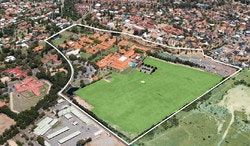Year 12 Mathematics Methods ATAR
This is an ATAR course which focuses on the use of calculus and statistical analysis. The study of calculus provides a basis for understanding rates of change in the physical world, and includes the use of functions, their derivatives and integrals, in modelling physical processes. The study of statistics develops students' ability to describe and analyse phenomena that involve uncertainty and variation.
Unit 3
This unit includes the following three topics: further differentiation and applications; integrals; and discrete random variables.
The study of calculus continues with the derivatives of exponential and trigonometric functions and their applications, together with some differentiation techniques and applications to optimisation problems and graph sketching. It concludes with integration, both as a process that reverses differentiation and as a way of calculating areas. The fundamental theorem of calculus as a link between differentiation and integration is emphasised. In statistics, discrete random variables are introduced, together with their uses in modelling random processes involving chance and variation. This supports the development of a framework for statistical inference.
Unit 4
This unit includes the following three topics: logarithmic functions; continuous random variables and the normal distribution; and interval estimates for proportions.
The calculus in this unit deals with derivatives of logarithmic functions. In probability and statistics, continuous random variables and their applications are introduced and the normal distribution is used in a variety of contexts. The study of statistical inference in this unit is the culmination of earlier work on probability and random variables. Statistical inference is one of the most important parts of statistics, in which the goal is to estimate an unknown parameter associated with a population using a sample of data drawn from that population. In the Mathematics Methods ATAR course, statistical inference is restricted to estimating proportions in two-outcome populations.
Assessments
Assessment will include investigations: 20% | tests: 40% | examinations: 40%.
Reporting
A brief interim report on class work and behaviour will be issued towards the end of Term 1. The achievement for the course will be reported as a College A - E grade as well as a percentage mark for the course and an examination mark for both Semester 1 and the year. In addition, the student's approach to class work and behaviour will be reported via the usual key performance indicators.
Student Expectations
Students are expected to:
- bring the required text, calculator and stationery to each lesson
- complete regular homework from a variety of sources including the text, worksheets and MathsOnline
- be aware of assessment dates and have prepared thoroughly for each assessment
- be proactive in seeking help from the teacher when required.
